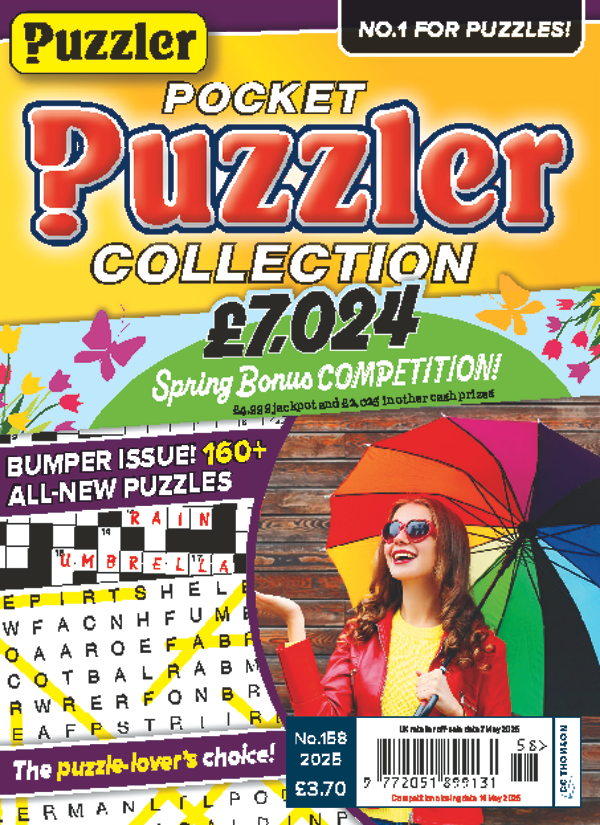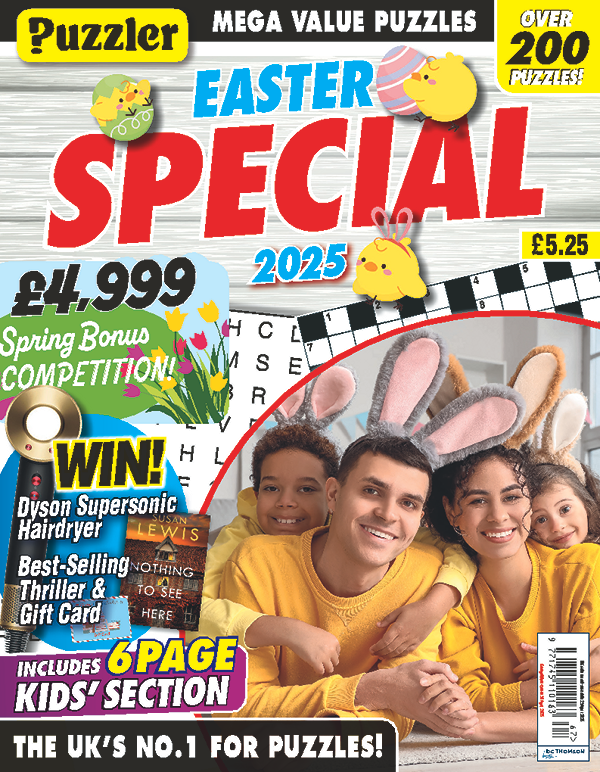Skeleton Crossword
Also Known As:
Bare Bones, Bare Square, Diagramless, DIY Crossword, Gridstart, Ingrid
A puzzle called Skeleton Crossword appeared first in the 'Daily Express' in June 1924. It looks rather forbidding, a puzzle to frighten or flummox the uninitiated. The solver is confronted with a set of crossword-style clues, but no immediately obvious place to write the answers, because the grid is virtually bereft of black squares and clue numbers. To make things even more difficult, the clues are devoid of letter-counts; in other words, the lengths of the solutions are not given. If an answer is hyphenated, or consists of more than one word, the solver may be given a warning after the clue (hyphenated) or (three words).
The key to solving a skeleton is to grasp the central idea, that crossword grids are symmetrical. This means that the few black squares and grid numbers that are given represent clues to the positions of others. Exactly how much help these starters provide depends on the type of symmetry employed in the design of the grid.
Most crossword grids use central or rotational symmetry, but this is not what comes to most people's mind when the idea of symmetry is put forward. Knowing this to be the case, compilers often work with grids that have a fully symmetrical design. With a fully symmetrical grid, a single black starter square usually hints at the position of three or seven other black squares (the exact number will depend on whether or not the black square in question lies on an axis). It is not uncommon for other symmetries to be employed. You may be surprised to learn there are eight, in total. For more information on symmetry, download the further details file on this page. Note that other types of symmetry do not assist the solver quite as much as a fully symmetrical grid. From a compiler's point of view, a fully symmetrical grid is less interesting than a grid with central symmetry, because it tends to mean more words of a particular word length or, put another way, less variation in word length.
The pre-set clue numbers can be a great help in determining the position of further black squares. For instance, if the solver notices that a number in the middle area of the grid refers to an Across clue, then the square to the left of that number must be black. In the same way, if the number refers to a Down clue, the square immediately above it must be black.
If the solver is able to enter an answer, the answer is likely to provide a clue to further black squares – the square immediately following the last letter of the answer will be black (unless the answer runs to the edge of the grid).
The clues for a skeleton crossword are usually straightforward, but any kind of clue can be used. Similarly, many crossword variants can be adapted to work with the skeleton principle – it provides an extra ingredient that can make puzzles more interesting, or more challenging, depending on your point of view.
Instructions
The black squares must be filled in as well as the answers. As a start, a number of black squares and clue numbers have been inserted. The black squares form a symmetrical pattern.
Related Puzzles
Alphabetical Jigsaw Crossword Outfit Outsider Skeleton CodewordFeatured In
Related Products












